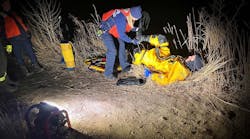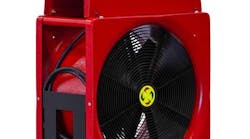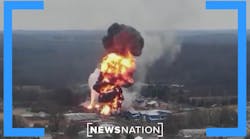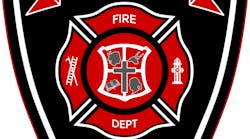For the first time in 2003, firefighter statistics from NIOSH and NFPA showed crashes were the leading causes of injuries and deaths.
As a member of "The Secret List" website I receive updates on many of the "near misses" and "hits" regarding fire and EMS injuries and fatalities. It amazes me how many of the injuries and fatalities are related to motor vehicle incidents. For the first time in 2003 firefighter LODD statistics from NIOSH and NFPA show MVA as a cause of trauma related death and injury superceding structural firefighting. The fireground has always been a dangerous place but it appears the more dangerous place is in the apparatus during emergency responses. In addition, we kill and injure a significant number of civilians while responding to emergencies.
In keeping with these findings I believe we need to re-evaluate our training priorities. Driver's training needs to be moved to the top of the list right up there with structural fire training, RIT, BSI, and responder personal fitness/wellness education.
As a driver training instructor I would like to offer the following five observations I have gleaned over the years. I have used these observations to develop a teaching tool which may be of help to some of you as you teach and train your drivers.
Driving emergency vehicles safely is not primarily about skill, hand eye coordination or reflexes. It is about...attitude. Let's face it as soon as we put on the uniform of a firefighter or EMS responder we are prone to feel better about ourselves and the fact we are there to provide a critical service. Add to that the public perception of us as "heroes" and you can see how easy it is easy to feel important. We are then given large vehicles with special equipment designed to allow us to respond "safely" to emergencies. These vehicles are bigger, shinier, and louder than your average car. We are allowed to go faster than civilians and are given "exemptions to the law which allow us to violate normal traffic procedures. At intersections people stop for us even though they have the right of way and when they see us coming they pull to the right and stop.
Since we are responding to "emergencies" we naturally take advantage of the exemptions and use our bigger louder vehicles to go faster and break laws all in the name of quick response times. All of this combined can give us an attitude that says we are more important than the other people occupying the roadways and that by virtue of the fact we are considered "Safety Forces" we are somehow inherently safer. Someone get a hook and get this guy off stage.
The truth is 68% of our most serious accidents occur during emergency responses. Fifty nine percent of the time the emergency vehicle operator is at fault. Why? Because we tend to think we are safer than other drivers and therefore we go too fast, follow too closely, and ignore common sense rules which we would never ignore if we were in our own car. The statistics seem to tell us the opposite. We are the dangerous ones on the roadways; we are the ones causing accidents all to save less than a minute on most response times. We need to rethink our positions as emergencies responders and remember our primary responsibility...public safety.
This brings me to the second observation. Responsibility; We have forgotten our "prime directive" if you will; public safety. The first thing we learn as emergency workers is that safety, safety, and safety is our first responsibility. Safety for ourselves and for the public. We will not needlessly endanger non-victims to save victims. This is most easily summed up in the EMS motto Do No Harm. We will not needlessly or recklessly endanger ourselves to save others. This is summed up in the firefighting principal of risk assessment; Risk nothing if nothing can be saved. Risk more to save a lot. Risk a lot to save a life.
I believe we get to caught up in the emotion of the moment and forget the basic premise of Do No Harm. Many organizations respond code red (code three, lights and sirens) to all calls believing a few seconds always count or because that's the way they have always done it. Why else would any one blow a red light without stopping or even slowing down? Saving lives is not the primary mission. Protecting the public is our goal. In this case we protect the public by more effectively managing our most dangerous activity, emergency responses.
I enjoyed the movie Speed. Good cop Keanu Reeves against bad ex-cop Dennis Hopper. Toss in the beautiful heroine Sandra Bullock and a twisted plot involving "speed", "go faster" and "more speed" gave us the makings for a very entertaining Hollywood production. The key word there is Hollywood. The great haven of untested reality. Unfortunately some of us apparently buy into this concept. Speed is the single biggest measurable factor working against us as responders. We drive too fast. Way too fast. Much of this is brought on by our attitude and the belief we need to save every second possible. Statistically we save only 40 to 60 seconds on the average emergency response. Be honest, how often in your career has one minute really made a difference. Now compare it to the number of times you went code red only to find a bogus call or a minor incident. Instead of making up the time by driving faster lets try getting out of the station quicker. Let's go to the bathroom after the call. Let's finish dinner after the call instead of trying a rush to the food finish line. Let's have our gear checked and ready to go before the tone goes off. Sound familiar. We strain at the gnat of restricting our speed and swallow the camel of being unprepared without blinking an eye.
Emotion is the next big factor in our link of unsafe driving. Emotion and attitude are closely linked. Because I tend to view myself as safer and my job critical I get upset when people don't stop or pull over when I am driving on emergency responses. Maybe it doesn't seem like it but I believe we take it personally when we are impeded in our response. Why else would we think of Grandma Doe as a dumb #*& %&*&*$*!. I know it is impossible not to get angry. The problem is we let our anger show in our driving. We pull up right behind some one and try to force them to pull over by sheer force of will and the use of our air horn and siren. We force people into intersections or off of the road when we go into the opposing lane of traffic. We have to make a conscious effort to back our emotions down. There is no place for anger or revenge in an emergency response.
Following distance is the final factor in making our emergency responses safer. I know many times I have closed in too closely behind the vehicle ahead of me in the mistaken belief they would see me and pull over to the right and safely stop only to find out they didn't have a clue I was there and when they saw me their first reaction was to slam on the brakes. The sinking feeling of the rear end of their car disappearing from sight below the bottom of the windshield cannot be adequately described. Other times I have intentionally (usually out of anger or personal insult) traded my safe following distance off in an attempt to get some one to pull over so I can "get back up to speed" and on my way to the call. The reality is most cars are already going 5-10mph over the speed limit. Many departments limit their responders to no more than 10 mph over the posted speed limit. If I am rapidly closing the distance on the unsuspecting car ahead of me I am probably going too fast already. If I continue to close that distance I am intentionally endangering myself and those in the car ahead of me. What I forget is that I am already making good time to the incident and if I stay back where I am I will safely arrive in a timely and efficient manner. What I gain at the most is only a few seconds at the risk of causing an accident for which I will surely be at fault. Another aspect of maintaining safe following distance is the cushion it provides you in case conditions ahead of you rapidly change for the worse. An accident or sudden evasive maneuver can be avoided by maintaining a safe following distance. As responders we need to back off and slow down.
The teaching tool I spoke of is an acronym made up of these five driving practices. It is as follows If we control our Speed, Attitude, Following Distance, and Emotions and remember our Primary Responsibility we will be S.A.F.E.R drivers. Catchy huh.
The chart looks like this;
Speed= Respond from the station faster and drive slower. Slow down. Make up your time by getting out of the station quicker not by driving faster.
Attitude = View yourselves as civilian drivers and show due regard at all times. There is an inherent danger in thinking you are some how better and safer than those around you.
Following Distance = Back off. Maintaining a safe following distance is your best opportunity to avoid an impending accident.
Emotion = Calm Down. Don't take the imprudent actions of civilian drivers personally. They probably didn't even realize you were there. Revenge on the road is a bad thing.
Remember your Primary Responsibility = your primary responsibility is Public Safety and a Safe Response. Do not sacrifice safety for speed or unnecessary risk. It is bad form to injure the public while trying to help the public.
I hope this is helpful in your training endeavors. Drive Safely.





